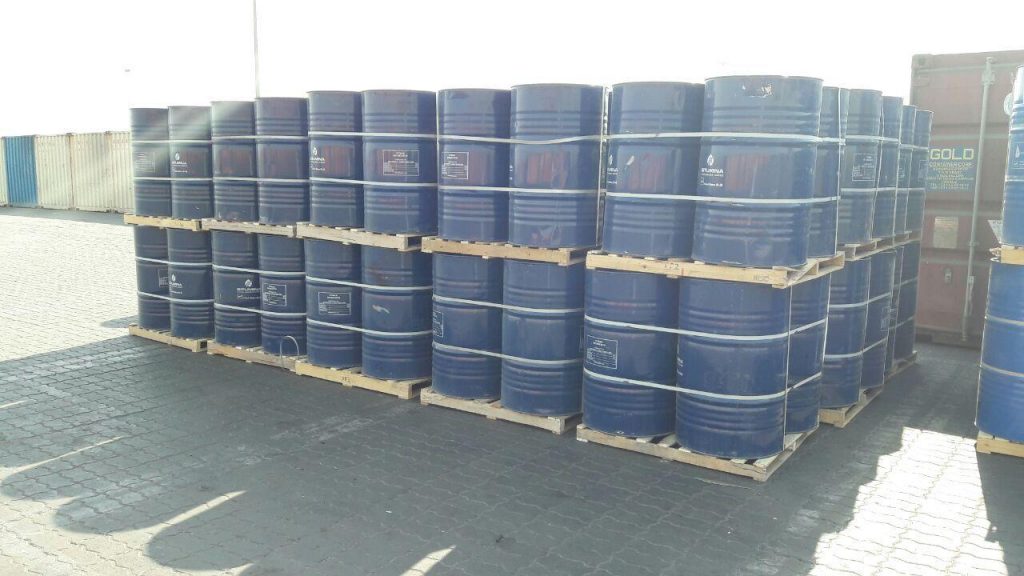
Emulsion Asphalt CMS-2

General Description of Cationic Emulsion Asphalt CMS-2
Bitumen emulsion consists of three basic ingredients: bitumen, water, and an emulsifying agent. Based on specifications it may contain other additives, such as stabilizers, coating improvers, anti-strips, or break control agents. It is well known that water and asphalt will not mix, except under carefully controlled conditions using highly specialized equipment and chemical additives.
Emulsion asphalt CMS-2 is a cationic emulsion. Emulsion asphalt CMS-2 are usually made by passing the mixture of hot bitumen and water phase between a rotating disc, cone or wheel and a stator. In the emulsification process, the hot binder is mechanically separated into minute globules and dispersed in water treated with a small quantity of emulsifying agent. The water is called the continuous phase and the globules of the binder are called the discontinuous phase.by proper selection of an emulsifying agent and other manufacturing controls.
Application of emulsion asphalt CMS-2
Cationic emulsions may be used at ambient temperatures with aggregates, which need not be completely dry. Emulsions are less hazardous to use in comparing with the cutback and can be applied in a wider range of conditions. Most CMS-2h applications are listed below:
- Bituchip (Chip seal)
- Bituseal (Seal coat)
Also, Ideally suited and designed for
- Pot hole filling/patch work
- Premix carpet work
- Strong bonding with existing surface
- High stability of patches
Successful performance of emulsion asphalt requires selecting the proper type and grade for the intended use. Guidelines presented in this chapter should help select the specific grade and type of emulsion to be used.
The first consideration in picking the right type and grade of the emulsion is how the emulsion will be used. Is it for a planned mix (central or mixed-in-place), a recycled mix, or a prime coat application? Is it for some type of surface application, such as a fog seal, slurry seal, micro surfacing, or chip seal? Is it for a maintenance mix? Once this decision is made, other project variables must then be considered. Some other factors that affect the selection are:
• Climatic conditions anticipated during construction. The choice of emulsion grade, the design of mix or treatment, and the selection of construction equipment should be dictated by the conditions at the time of construction.
• Aggregate type, gradation, and availability.
• Contractor or construction equipment availability.
• Geographical location. The hauling distance and, in some cases, water availability are important considerations.
• Traffic control. Can traffic be detoured or only controlled through the work area?
• Environmental considerations.
• Proper application for pavement preservation or pavement distresses.
• Traffic type and volume.
While general guidelines can be given for selecting emulsions, laboratory testing is strongly recommended. There is no substitute for a laboratory evaluation of the emulsion and the aggregate to be used. Different types and quantities of emulsion should be tried with the aggregate to find the best combination for the intended use. An experienced technician can determine the type and grade of the emulsion to be used.
Cationic emulsions are preferred for use with negatively charged siliceous aggregates such as quartz, granite, sandstone and river gravel. In general, Cationic emulsions can be used with a wider range of aggregates, will tolerate greater quantities of moisture, and will break at a lower ambient temperature. The main application areas of Emulsion bitumen are surface dressing, tack coats, prime coat, slurry seal, and cold mixing.
Dust control (SS-1, CS-1, CRS-1)
Tack coat (SS-1, SS-1h, CSS-1, CSS-1h, CRS-1)
Prime coat (SS-1, SS-1h, CSS-1, CSS-1h)
Fog seal (SS-1, CSS-1, MS-1-CMS-2, CRS-1)
Penetration prime (SS-1)
Cold mix asphalt, Mulching, Asphalt Sealers (CSS-1)
Chip seal, single, or multiple treatments (RS-1, RS-2, HFMS-1, HFMS-2, HFRS-2, CRS-2, and CRS-2P)
Sand seal (SS-1, SS-1h, CSS-1, CSS-1h, CMS-2s, CRS-1, CRS-2)
Slurry seal (SS-1h, CSS-1h, CSS-1Hp)
Sandwich seal, cape seal, chip seal (CR-2)
Micro surfacing (CQS-1h)
Structural and surface plant mixture (SS-1, SS-1h, HFMS-2s, CSS-1, CSS-1h,)
Stockpiled patching mixture (HFMS-2s, CMS-2s)
In-place road mixing (SS-1, SS-1h, HFMS-2s, HFMS-2, HFMS-2h CMS-2, CMS-2h, CSS-1, CSS-1h)
Crack filer, joint coating (RS-2, HFMS-2h, MS-2, CMS-2h, CRS-2P)
Asphalt sealers, Immediate Maintenance, Stockpile Maintenance Mixes (CMS-2)
Immediate Maintenance (CM2, CM2h)
Advantage of using emulsion asphalt CMS-2
• No petroleum solvent required to liquefy
• Little or no hydrocarbon emissions
• In most cases, used with no additional heat. It does not need any pre-heating. Thus results in the case of handling for the user, besides saving in cost.
• The ability to coat damp aggregate. It can be used even with wet aggregates thus enabling users to carry out work during the monsoon also.
• Can use cold materials at remote sites. Cold application of Bitumen Emulsion ensures safety to the workforce; it is a user-friendly product. Being cold applied the work progresses much faster.
• Wide variety of emulsion types available today
• Economical
• Free from danger ( for fire )
• Environmental
• Harmless for worker health.
• It can use with moisture aggregates. It can be used even with wet aggregates thus enabling users to carry out work during the monsoon also.
• Application temperature is low and does not need heating while storage and transportation period. For this reason, it provides energy saving.
• Emulgators increase adhesion they effect as anti-stripping agent
• It can use in four seasons. Especially it gives a chance application in the rainy region and it extends application period.
• It has a lot of application area and construction methods.
• Bitumen Emulsion does not require petroleum solvent to make them liquid as in cut back and also it is not required to be heated like normal Bitumen. Thus saving imported petroleum oil or firewood.
• Toxic fumes (Hydrocarbon emission) normally emitted from heated bitumen & cutbacks not present when Cationic Bitumen Emulsion is used, as no heating is required for its application.
Packing of emulsion asphalt CMS-2
Packing of emulsion asphalt CMS-2 is in a new thick steel drum on a pallet to prevent any leak inside of container also bulk in bitutainer and tanker.
Specification of emulsion asphalt CMS-2
Analysis of cationic emulsion asphalt
Emulsion Type: Medium-Setting
Grade: CMS-2
Standard: ASTM D 2397M – 13
| Property | min | max | Test method |
| Test on emulsions | |||
| Viscosity, Saybolt Furol at 50 °C, SFS | 50 | 450 | ASTM D244 |
| Storage stability test, 24-h, % | – | 1 | ASTM D6930 |
| Coating ability and water resistance: | |||
| Coating, dry aggregate | Good | ASTM D244 | |
| Coating, after spraying | Fair | ASTM D244 | |
| Coating, wet aggregate | Fair | ASTM D244 | |
| Coating, after spraying | Fair | ASTM D244 | |
| Particle charge test | Positive | ASTM D244 | |
| Sieve test, % | – | 0.1 | ASTM D6933 |
| Distillation: | |||
| Oil distillate, by volume of emulsion, % | – | 12 | ASTM D6997 |
| Residue, % | 65 | – | ASTM D244 |
| Tests on residue from distillation test: | |||
| Penetration, 25°C (77°F), 100 g, 5 s | 100 | 250 | ASTM D5 |
| Ductility, 25°C (77°F), 5 cm/min, cm | 40 | – | ASTM D113 |
| Solubility in trichloroethylene, % | 97.5 | – | ASTM D2042 |

